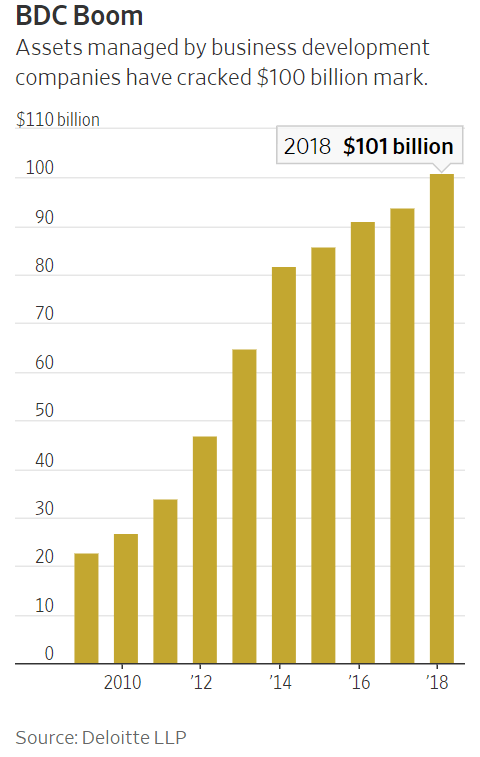The following is from an update that was previously provided to subscribers of Premium BDC Reports.
The following information was discussed in the following Seeking Alpha interview last week:
Please feel free to read/comment on the public article linked above.
BDCs, like REITs almost 20 years ago, want institutional investors and the scale that comes with them. Recently, the largest asset managers including Blackstone, KKR, Carlyle, Ares, TPG, Franklin Templeton, and Owl Rock have been actively entering into the sector and there will likely be positive changes to regulations over the coming quarters driving up multiples for current investors. For example, the acquired fund fees and expenses (AFFE) rules require investment companies and mutual funds investing in BDCs to include an additional line of expenses outlining the fees and operating costs charged by the BDC distorting expense ratios making them prohibitively expensive for a number of institutional investors that could have otherwise been attracted by the vehicles’ high dividend yields.
In December 2018 the SEC kicked off a consultation on a broader fund of funds reform proposal that included views on the impact of AFFE on BDCs. In September 2019, the Coalition for Business Development (“CBD”), a BDC lobby group, put forward a proposal to the existing AFFE:
“The current classification of BDCs harm institutional ownership and ‘Main Street’ BDC investments along with it,” said Joseph Glatt, chairman of the CBD. Under the CBD’s alternative proposal, a SAI disclosure would detail the BDC’s operating expenses. Any costs would be factored into the BDC’s trading price. The argument is that any expenses would be reflected in the fund’s total return. After the adoption of the AFFE rule, BDCs were delisted from multiple fund indices, including the S&P and Russell in 2014. Following the delistings, BDCs on average have traded below their net asset value and have since never fully recovered.”
Source: Reuters “BDCs increase pressure on SEC for reporting exemption“
The following was from a previous call with Main Street Capital’s (MAIN) CEO:
“Currently, our focus has been directed primarily on the Acquired fund fees and expenses or AFFE rule as it affects BDCs and the special deduction for individuals that receive dividend income from REITS and MLPs. The first item we are working with the SEC to either eliminate or at least modify the rule that effectively resulted in the elimination of BDCs eligibility for index fund inclusion. The second item we are working with congressional staff to include BDC dividends as being eligible for the deduction so as to level the playing field with REITS and MLPs”
Source: MAIN CEO Vince Foster on Q2 2018 Results – Earnings Call Transcript

To be a successful BDC investor:
- As companies report results, closely monitor dividend coverage potential and portfolio credit quality.
- Identify BDCs that fit your risk profile.
- Establish appropriate price targets based on relative risk and returns (mostly from regular and potential special dividends).
- Diversify your BDC portfolio with at least five companies. There are around 50 publicly traded BDCs; please be selective.
